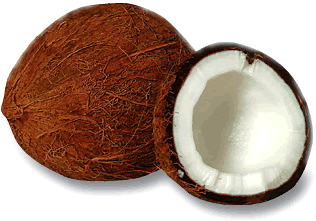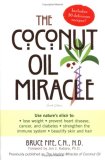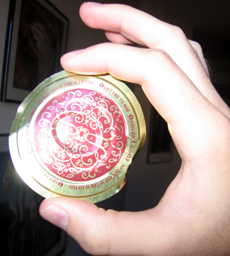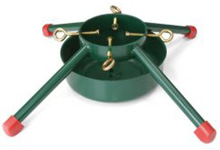I’ve been on a low-carb diet now for about two-and-a-half months. This has consisted of eliminating all breads, potatoes, and starchy foods from my diet (Regarding fruit, I pass on bananas with only the occasional apple while still eating berries and other colorful fruits). Furthermore, it has involved intermittent fasting. Through this diet and with minimal exercise, I have reduced my body fat percentage from around 20% to around 10% representing a loss of some 15+ lbs of fat and the gain of a handful of pounds of lean tissue (Weight change from approx. 182 to 168).
This weight loss was the easiest, most satisfying change in my health and body composition I’ve ever experienced.
As this post is extensive, here is the general breakdown:
- Intro and Intermittent Fasting
- Low-carb diet
- Implementation and Conclusion
- Additional Reading
- Footnotes
Here are the details:
Intermittent Fasting
Yes, you read correctly, I used the “f word”: fasting. And I can read your mind:
- What? You starved yourself?
- Is that for religious reasons?
- Yeah, that’s called anorexia!
No, no and no. And if I missed any others, no to them, too.
I first got turned onto Intermittent Fasting (IF) via Richard Nikoley over at Free the Animal who had been practicing Art Devaney’s evofitness sans fasting for about a year. Upon trying IF, Richard immediately noticed results in the form of both significant weight loss as well as change in appetite.
 Richard’s successes seemed interesting enough from a distance (Fasting? Fascinating but not for me!), but what catalyzed a personal trial in IF and low-carb came after watching a lecture1 by science writer Gary Taubes, author of Good Calories, Bad Calories (“GCBC”).
Richard’s successes seemed interesting enough from a distance (Fasting? Fascinating but not for me!), but what catalyzed a personal trial in IF and low-carb came after watching a lecture1 by science writer Gary Taubes, author of Good Calories, Bad Calories (“GCBC”).
The big takeaway from the referenced lecture was that insulin, not overeating or under-exercising, is the chief culprit in why people become fat. Since eating carbohydrates causes the pancreas to secrete insulin, there is a direct correlation between carbohydrate consumption and insulin secretion. Ipso facto, the argument is made that eating carbs makes you fatGCBC.
Could it really be that simple? Dieting and working out had failed to reduce my weight effectively — it certainly seemed like something else was affecting my weight. Richard’s success and Taubes’ conclusion sufficiently piqued my interest. Admittedly without knowing all the data, I chose to do an IF, low-carb experiement.
What exactly is intermittent fasting? Intermittent fasting is choosing not to eat for a set period of time, which unlike your daily sleeping fast, is a sustained break from regularly occurring feeding. Translated into some bright line rules, I’d define an intermittent fast as going at least sixteen hours without eating (call that a “short” fast) or going for as long as 30 – 36 hours or three meals (“long fast”). As defined here, a fast requires there be no dietary caloric load on your body.
Fasting for longer than 36 hours likely will not only result in diminishing marginal returns, but it could also start messing with your metabolism. Most obviously, all fasts must be broken by eating.
Completing one to two long fasts per week so long as they are separated by eating a few meals can result in some drastic health benefits while causing no harmful effects on metabolism so long as you are completing some form of regular high-intensity exercise2.
What happens when you fast? Some interesting biological things, apparently. For one, the body moves to mobilize fat stores from the adipose tissue (the fat under your skin) to consume the fat as energy. It accomplishes this fat mobilization as a natural extension of reducing insulin concentrations in the blood as well as an increase in fat mobilizing hormones such as adrenaline, noradrenaline and growth hormone. Interestingly enough, growth hormone is also released to conserve protein from catabolism. Protecting the proteins in your body during a fast is important because your body needs its lean tissues to survive (be they muscle or organ).
A benefit of fasting (for your mind) is that it alters your perspective on eating. At the end of a 30 hour fast, you want to eat something good for your body. You don’t want to gnosh on some french fries, slam a sugary soft drink and eat a bowl of ice cream. Even more, via abstaining from food even when it is available for consumption, you are putting your mind in control of your behavior. Taking back a bit of control over your life is an empowering feeling that leads to improved self-image and confidence.
Biologically, whether fasted or fed, your body is going to take measures to maintain adequate energy flows to demanding muscles and organs. Your body gets this energy from dietary sources or from storage within the body. The key here is that your body is always working to strike an appropriate balance (homeostasis) given the current demands. Were it not managing this process, both eating too much or eating too little would result in your untimely demise!
The ability of our bodies to regulate energy during times of feast or famine is evolutionary engineering. It is reasonable to posit that homo sapiens have only recently lived in such abundance that they could expect to eat food throughout the day, three times a day or more. Go back 50,000 years and you’ve still got mostly the same genetic footprint for human beings, but an entirely different supply of food. These were times when “foraging for food” meant more than a run to the pantry. In other words, our genetics have been engineered to allow us to go without food for longer than ten hours without resulting in our bodies failing. For a tidbit more on the evolutionary aspects of intermittent fasting, see footnote 7.
The bottom line: by reducing insulin in the body and up-regulating fat mobilizing and protein-protecting hormones, IF naturally turns your body into a fat burning machine. During a fast, your body will use whatever energy necessary, which will be similar to the amount of energy required were you eating normally. Over a long fast, if your body requires 2,500 calories, you could expect the majority of that energy to come from fat stores. Thus, the combination of IF with exericse is an effective way to reduce fat stores and work towards a leaner body composition.
Now, the astute reader asks, “Couldn’t you switch your body to being a fat burning machine by cutting out carbohydrates from your diet? If you only ate fat and protein, your body would have to burn the fat for energy, right?”
Good question!
Low-carbohydrate diet
And the answer is, of course, yes! The metabolic pathways while on a fast are the same processes when on a low-carbohydrate dietGCBC (Also see Eades here). This is because in both states (fat/protein-fed or fasted) your body is going to rely on free fatty acids as its main source of energy. Does it really matter that the fat comes from dietary sources or from your cells? Apparently, not3.
If you want to know a ton more about this, and I reiterate this in the footnotes, pick up Gary Taubes’ Good Calories, Bad Calories, an exhaustive book about the science and history of the low-fat-is-healthy hypothesis, the varying research studies behind low-fat diets, the research behind low-carbohydrate diets, obesity, diabetes, insulin, caloric restriction, exercising to lose weight, metabolic syndrome, some biochemistry and more. GCBC is a fascinating and eye-opening read.
As noted before, Taubes concludes that insulin is uniquely fattening. And again, since insulin is released after eating carbohydrates, carbohydrates are fattening.
Insulin is a hormone produced by your pancreas that regulates blood sugar, or glucose. Glucose comes from carbohydrates either directly or upon digestion. The presence of insulin downregulates fat mobilizing hormones (Human growth hormone, adrenaline, noradrenaline, glucagon, for example). Upon the introduction of insulin into the bloodstream, free fatty acids are driven back into fat cells for storage as they are now deemed unnecessary given the newfound energy. When all this energy leaves your bloodstream, you get hungry! In this manner, consuming carbohydrates not only shuts down fat mobilization but it can even spur hunger.
Furthermore, insulin tells your liver to take glucose and make triglycerides or fat for storage. Even more, if you note the “glyc” in triglycerides — that is for glycerol phosphate which holds the long fat chains together. Guess where your body gets glycerol phosphate? From metabolizing glucose! Thus, not only does the presence of insulin spur hunger and fat manufacturing by the liver, but the glucose facilitates fat creation by providing the molecule necessary to build the fat!
Insulin, by way of carbohydrates, is like the triple threat to being lean. It follows logically that by reducing insulin concentrations in the body, you can curb hunger, stop fat storage, and maintain the fast-induced fat mobilization process discussed earlier.
You reduce insulin concentration by fasting and avoiding carbohydrate-dense foods.
Though it is unnecessary to fast while on a low-carb / carbohydrate restricted diet, fasting speeds things along via caloric restriction overall while still allowing you to eat normal meals when you do eat. Taubes contends that a fast effectively accomplishes the same thing as Atkins’ induction phase, which is a two-week period of eating twenty grams of net carbohydrates a day or less4.
Implementation:
Though this is by no means the way to implement this diet, this is my semi-specific methodology. You must pay attention to your own results and customize a system that works for you.
Fasting: On a day when I plan to start a fast, I eat breakfast and lunch. Then I eat nothing else until dinner the next day. During the fast, I am free to drink water, tea and coffee so long as no creams or sugars are added. Some even say diet soft-drinks are ok but I universally avoid artificial sweeteners. All said, this results in anywhere from a 26 – 30 hour fast.
I make it a point to do about twenty to thirty minutes of high-intensity exercise about an hour or two prior to breaking my fast (typically some combination of multi-joint weight-lifting like dips, pull-ups, squats, kettlebell exercises, etc.). Whether you do your high-intensity exercise while in a fasted state or not, the exercise must be done! It is not optional.
I break the fast with a nutritious meal with normal-sized portions. In all meals, I avoid or eliminate carb-heavy foods. I avoid bananas and apples and all juices while regularly eating all types of berries, tomatoes and avocados. Nuts are okay though peanuts are not nuts but legumes (I still eat them from time to time though).
As far as portion size, Art DeVany says, and I think this is sound advice, to eat to satisfaction not to fullness.
Breads, potatoes, legumes and candy are off limits. Yes I cheat from time to time. I accept it and don’t allow it to overthrow my broad efforts. I find myself cheating less more and more as my body further detoxifies from the high-glucose, high-insulin addiction. I do not avoid beer or wine though I am always sure to stay hydrated and again, pay attention to your bodies!
For breakfast, I regularly eat a couple eggs (yolk never excluded), bacon or sausage (uncured) and berries. Some say avoid dairy, I do not and have not, regularly consuming cheeses and heavy cream. I do avoid milk and yogurt (can’t find any yogurt without a minimum of 15 gm of sugar). Remember: fat is ok. For me, low-carb did not mean “high protein” — it meant “high fat”. We’ve all been programmed to be scared of “high fat” — if you need some guidance in getting over your fear of fats, pick up Taubes’ book.
After breaking a fast, eat at least six meals before doing another fast.
Some notes:
While on any initial fasts, be prepared for some folks to think you are completely insane. If you keep it up, you’ll laugh when you find some of these people trying it out themselves a month later. Also, some people may experience headaches while fasting (particularly women). This is your body struggling with the swithover to fat as energy. Feel free to start with smaller fasts (say sixteen hours) before working up to a longer fast. Again, this is very personal — the nuances of insulin-sensitivity differ from person to person. Do what works for you.
If you try this out, please report any results. Questions? Comment below or email me.
Finally, a disclaimer. I am not a doctor. All of the above is for information purposes only. Any experiments you try on yourself are your own responsibility!
Conclusion:
I feel good practicing IF and a low-carbohydrate diet. The cravings for things like pizza go away faster than you might think. Excluding easy, filler-type foods makes you a smarter, more creative chef.
Via this regime, nay lifestyle, I’ve gotten back down to a body composition level akin to when I was eighteen, something I had long given up as impossible5. And I’ve done it in only a matter of a couple months.
My results being undeniable, I now have my father-in-law, wife, and brother all practicing this diet, something I now see as a way of life6 that I can maintain indefinitely. My sister-in-law and sister are also dabbling with the diet, too.
Additional Reading:
There are others which I’ll have to point to in the future.
Footnotes:
GCBC Despite the name indicating the book is about foods and calories (a diet book), Good Calories, Bad Calories is a fantastic read on the history of research on low-fat and low-carb diets, insulin, weight-loss, pre-Westernized cultures and nutrition, cholesterol, cardiovascular disease, cancer (metabolic syndrome or “diseases of civilization”) and more. If you want to learn all about these topics, you must pick this book up. If you are skeptical about low-carb diets, I implore you to read GCBC. It is a fascinating read at approximately 450 pages (Note: the book is 600 pages, but 150 of them are references!).
1 Watch Taubes lecture on “Big Fat Lies” on Google video here
2 Defined as low quantity or time, high quality or work completed. Volumes could be written (and have been) on this subject. Bodyweight circuits where exercises are performed back to back (See C8B300 for an example) are one form of this. Tabata intervals are another. A Body For Life style cardio session is also popular where you do 2 minutes at Level 5 intensity, then four sessions of one minute each at levels 6, 7, 8, 9 and end with a minute at level 10 and then a minute of cooldown back at level 6 (This adds up to 20 minutes total: 2 warmup, 16 on the four minute intensity cycle, one at peak intensity, and one at cooldown).
3 Therein possibly also lies the answer to a question that arises regarding low-carb diets compared to non-low-carb caloric restriction diets. Research has shown that low-carb dieters can severely restrict calories, achieve significant weight loss, and not be hungry. Comparatively, non-low-carb calorically restricted diets wreak havoc on the dieters making them cranky and typically resulting in all the weight going back on upon ceasing the diet.
4 Many, many people I’ve talked to about this think I’m doing the Atkins diet. If I am, fine. Honestly, I haven’t read Atkins stuff well enough to say if I’m following his protocol or not. I mention the comparison of a fast and the induction phase as a means to point out the connection between fasting and low-carb diets as well as the benefit that fasting provides in terms of speeding along the process.
5 Having tried the aforeblogged Getting back to fighting weight (Post deprecated) Body for Life program and seen results, but only after untold hours in the gym (probably on the order of 100 hours) and pounding three protein shakes per day in addition to three meals.
6 Fasting twice per week is not something you have to do indefinitely. In fact, its too regular to maintain on a permanent basis. Our bodies should be kept on their toes! Periodically going to only fasting once a month would be an option (Or once every other week). Just be sure to mix it up. My guess is that once you try fasting, you’ll find that going on a periodic fast is something you want to do to clear your mind, body, etc. and/or ward off a cold, get over a weekend of gorging, whatever.
7 This diet conforms readily to the way our bodies seem to be genetically engineered by tens of thousands of years of evolution. Hunter/gatherer man wasn’t looking for french fries and rolls! It has only been in the past ten millennia that carbohydrate-dense, processed foods have been available for consumption. Our bodies simply struggle to cope with such a drastic shift in diet from nuts, berries, leafy greens (all slow-to-metabolize carbohydrates on the glycemic index), and meat to breads, rices, potatoes, and sugar which require immense amounts of insulin to regulate.







